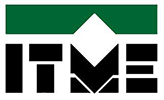Printed electronics platform is dedicated to research and development of electronic devices and functional coatings made with diverse printing techniques. The aim is to provide a full chain of processes and activities necessary in R&D of novel printed electronic applications. The platform is composed of 4 laboratories related to:
- Printable materials fabrication (i.e. paints, inks and pastes; conductive, insulating, resistive, luminescent, electrically or chemically sensitive for chemicals, temperature, humidity etc.)
- Materials deposition with printing techniques and coating (i.a. screen-printing, ink-jet, flexographic, rotogravure, stamp printing, pneumatic or ultrasonic spray coating, aerosol jet printing)
- Bonding and hermetisation (i.a. flip-chip bonding, soldering or mount with adhesives of printed structures with other electronic components, lamination, hermetisation with coatings or parylene)
- Quality and reliability assessment (i.a. SEM, microscopy, profilometry, abrasion tests, thermal shock chamber, climate chamber, mechanical tests, electrical tests)
Printed electronics is especially interesting for mass production of disposable electronic components, sensors or for flexible electronics. Thanks to the low temperature processes various substrates may be used such as plastic foils, fabrics or papers. There is also a possibility to use rigid substrates like PCBs, metal sheets, ceramics or glass. Applications may be related i.a. to sensors, antennas, capacitors, batteries, energy harvesters, light sources, photovoltaics, light weight conduits.
Applications which are developed by the Printed Electronics Platform after slight modifications made together with the end-user, may be easily implemented in printing factories, with the use of the same machinery park.















